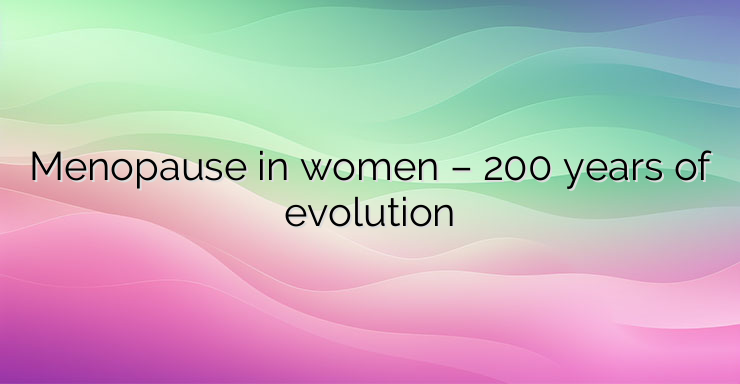Apart from humans, only chimpanzees and whales experience a natural process of loss of reproductive potential in females after a certain age. This shows how specific a condition menopause is. And although it is the highest animal species that experiences it, man still does not fully know its mechanisms. Menopause was officially mentioned in literary sources only at the beginning of the 19th century, and before that it was considered a strict taboo. The father of the term menopause is considered the French physicist Charles Pierre de Garden, who in 1821 dedicated a special work to the end of menstruation in women and called it La menepausie. And although it has been considered by its current name for only 200 years, the end of menstruation has been the fruit of various interpretations, including religious ones, since biblical times. Under the dictates of some religious beliefs, women had to undergo ritual baths after the end of each monthly cycle, which symbolized their purification, allowing the return of sexual activity. With the onset of menopause and the end of menstruation, such rituals were no longer possible and the consequences for women were often negative. In some cases, the end of menstruation also marked the end of a woman’s sexual activity – physical intimacy was no longer allowed. Often, menopausal women were prohibited from cooking, visiting places of occult significance, and even cohabiting with their partners. Along with the attitude towards menopause, over the years differences are also observed in the nature of its manifestations. Menopausal symptoms have been found to vary in different regions of the world. In Europe and the USA, the most common complaints of women in menopause include hot flashes and sleep problems, in Japan it is frequent pain along the bone-joint system, and in India it is the deterioration of vision. These differences are explained by the peculiarities of nutrition, stress load and other factors affecting women’s health in different regions of the world. This also explains the different approach to the treatment of menopause and mastering its manifestations over the years. The first steps in this direction involved means that we cannot take seriously today – from drinking boiled water on an empty stomach, to tying a patch of belladonna leaves to the stomach, to injecting lead salts into the genital area. It was only at the end of the 19th century that the application of herbal extracts began, most often from black cohosh, red clover, maca, etc. In addition to them, products of animal origin containing pulverized ovaries from cows, etc. are also included. It is in this period that menopause begins to be seen more realistically. It is no longer seen as a disease, but as a natural condition provoked by a deficiency of certain biochemical products, in this case sex hormones from the estrogen group. NEWS_MORE_BOX After the end of the Second World War, the development of synthetic hormone preparations began,which are the basis of hormone replacement therapy. They are also applied nowadays in a more advanced form. As their safer alternative, natural products containing the so-called phytoestrogens – plant analogues of estrogen, the intake of which is not associated with the unwanted side effects of hormone replacement therapy. The point of view towards menopause has changed many times over the years. However, one thing has not changed – women continue to be subject to menopausal symptoms. Fortunately, today we have many more options for successfully mastering them.


Leave a Reply